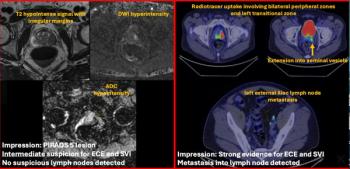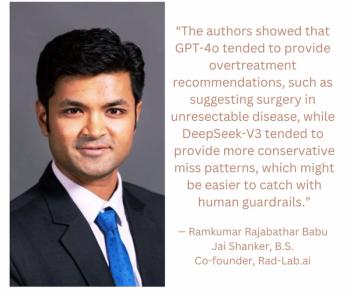
MIO Briefing
In the quantitative world of molecular imaging, the standardized uptake value (SUV) looms large as a key measure of tumor aggressiveness and therapeutic response.
An SUV is a simple semiquantitative index of glucose metabolism that measures the concentration and activity of fluorine-18 FDG in a tumor during a PET scan. Data are acquired 45 to 60 minutes after injection and then normalized for the injected dose and the patient's weight and height. The SUV is obtained by locating a region of interest (ROI) over a lesion, then dividing that by the injected dose and the patient's body weight. It is expressed by the formula:
SUV= AT X Kg
- -
V A
AT = activity in ROI, V = volume of ROI, Kg = patient weight, A = injected activity (injected FDG dose)
Two parameters can be obtained from that formula: the SUVmax, which is the maximum pixel count in the region, or the average pixel count, the SUVaverage.
Several variables go into the SUV that potentially make it less useful. These discourage many radiologists from relying on this calculation. Body composition and habitus are a source of variability because the conventional SUV normalizes for body weight. Fat, however, has a much lower uptake of FDG than do other tissues, meaning the SUV for many tissues shows a strong positive correlation with weight.
Variations in the time from tracer injection to time of PET scanning (uptake period) have an extreme effect on the SUV. Dr. Dominique Delbeke, a professor of radiology at Vanderbilt University, points out that disruptions or delays in the workflow in a radiology department can affect the uptake period and change the SUV by 15% to 20%.
Plasma glucose level at the time of study also has a major effect on the SUV. Because the uptake of FDG by a tumor relates to the amount of glucose in the blood, there will be less FDG if the serum glucose level is higher.
Other factors that can affect the SUV include lesion blurring due to patient motion, FDG dose infiltration, and partial volume effects that depend on scanner resolution.
"Most of us do not use SUVs for our diagnostic clinical PET imaging," said Dr. Edward Coleman, director of nuclear medicine at Duke University. "We use visual interpretation. SUVs are not used much clinically. The one area in which the SUV has been shown to provide a great deal of prognostic information is when it is used at the time of diagnosis of lung nodules in patients who have lung cancer."
Both Delbeke and Coleman stress that SUVs are very valuable in following the effect of therapy on cancer, as an index of response to therapy. But Delbeke opposes use of SUVs in clinical situations because of their technical complexity and the risk of misleading referring physicians.
SUV quantification as an automated feature has been available on PET scanners for the past five to seven years, according to Jonathan Frey, director of product marketing for the molecular imaging division of Siemens Medical Solutions.
Newsletter
Stay at the forefront of radiology with the Diagnostic Imaging newsletter, delivering the latest news, clinical insights, and imaging advancements for today’s radiologists.




























